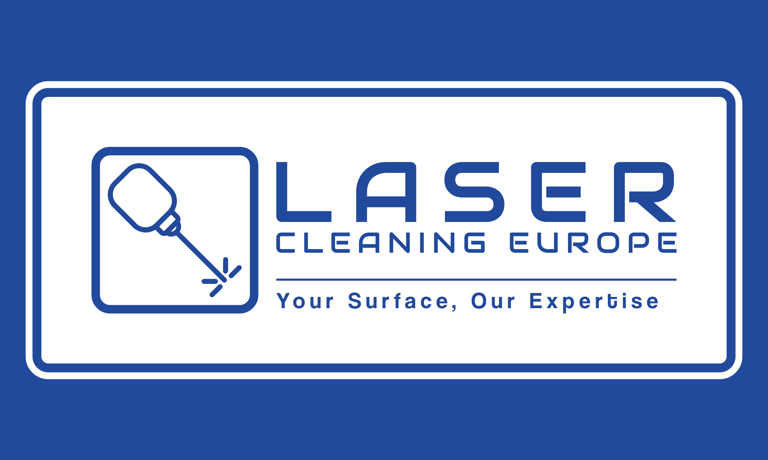Vous préférez notre site web en français ? www.decapagelaser32.fr
The Benefits of Laser Cleaning in Historic Restoration
Laser cleaning or Laser Stripping (the latter is also referred to as "décapage laser" in French), is an innovative restoration technique employed to remove contaminants and unwanted materials from the surfaces of historic buildings and monuments.
3/20/20255 min read


What is Laser Cleaning?
Laser cleaning or Laser Stripping (the latter is also referred to as "décapage laser" in French), is an innovative restoration technique employed to remove contaminants and unwanted materials from the surfaces of historic buildings and monuments. This method utilizes focused laser beams to precisely target and eliminate layers of dirt, paint, rust, and other pollutants without the need for abrasive tools or harsh chemicals. The application of laser cleaning technology represents a significant advancement over traditional cleaning methods, which often rely on mechanical means or chemical agents that can damage sensitive historic materials.
The operational principle of laser cleaning is rooted in the interaction between the laser light and the contaminants on the surface being treated. When the laser beam is directed at the target area, the energy from the light is absorbed by the contaminant and converted to heat. This rapid heating causes the contaminants to expand and subsequently dislodge from the underlying surface. Importantly, this non-touch process minimizes the risk of physical damage, making it particularly suitable for delicate materials often found in historic structures.
One of the primary advantages of laser cleaning is its precision. The technology allows restorers to selectively clean specific areas without impacting adjacent surfaces. This precision is crucial in preserving the integrity and appearance of historic architecture. Additionally, laser cleaning is an environmentally friendly option as it significantly reduces the need for chemical solvents and abrasive materials. The technique is also efficient, reducing the time required for restoration projects while maintaining high standards of care.
Ultimately, the integration of laser cleaning into the field of historic restoration exemplifies a commitment to utilizing modern technology for the preservation of our cultural heritage, ensuring that these monuments can be appreciated by future generations.
The Advantages of Laser Cleaning for Historical Restoration
Laser cleaning has emerged as a revolutionary method in the field of historical restoration, offering numerous advantages that are particularly beneficial for preserving artifacts and monuments. One of the most significant advantages of this advanced technology is its precision. Laser cleaning systems utilize focused beams of light to target specific contaminants, ensuring that only unwanted materials are removed while leaving the underlying substrate intact. This precision is crucial, especially when working on delicate historical pieces, where any damage could irreversibly alter their integrity.
Another remarkable benefit of laser cleaning is its capability to eliminate a wide range of contaminants, including dirt, rust, paint, and biological growth, without the need for abrasive methods that can pose risks to the structure of the item being cleaned. Unlike traditional cleaning techniques that often involve scrubbing or chemical applications, which can erode the surface over time, laser technology applies an energy-efficient approach that is tailored to the condition and composition of the material. This selective removal ensures that sensitive elements of historical significance are preserved during the cleaning process.
Furthermore, laser cleaning is well-suited for intricate detailing, a characteristic that is often essential for valuable heritage pieces. Many historical artifacts feature elaborate carvings and surface textures that require careful handling; therefore, the non-invasive nature of laser cleaning makes it an excellent choice. It can navigate complex designs without compromising the artwork, ensuring the visual and historical elements remain intact. By employing this method, restorers can achieve cleaner surfaces while enhancing the aesthetic appeal of the artifacts without endangering their original craftsmanship.
Overall, laser cleaning not only promises effective restoration but also embodies a modern, respectful approach to preserving our cultural heritage for future generations.
Case Studies: Successful Applications of Laser Cleaning
Laser cleaning technology has been increasingly adopted in the field of historic restoration, yielding remarkable results in the preservation and revitalization of various monuments and structures. One iconic example is the restoration of the intricate stonework on the famous cathedral in Cologne, Germany. This historic site, languishing under layers of pollution and grime, underwent an extensive laser cleaning procedure that effectively removed decades of soot without damaging the delicate features of the stone. The outcome not only restored the cathedral's original aesthetic appeal but also significantly improved its structural integrity.
Similarly, the Lincoln Memorial in Washington, D.C. benefited from laser cleaning techniques during its restoration process. After years of exposure to environmental pollutants, the marble façade had become discolored. Using a specialized laser cleaning system, conservators were able to meticulously eradicate the accumulated dirt and mildew. This application not only returned the memorial to its gleaming white state but also extended the life of the marble, ensuring its resilience against future deterioration.
Another notable case is the historic Palazzo Vecchio in Florence, Italy. This iconic building, a blend of Gothic and Renaissance architecture, faced significant restoration challenges due to the presence of graffiti, biological growth, and pollutants. Laser cleaning enabled the removal of these unwanted materials while preserving the integrity of the underlying surfaces. The refined method provided a controlled solution that safeguarded the ancient stone textures, leading to a triumphant restoration that highlighted the building's historical significance while promoting sustainable preservation practices.
These examples illustrate the transformative effects of laser cleaning in historic restoration. By carefully selecting this advanced technology, conservators have achieved successful outcomes that not only beautify our cultural landmarks but also align with modern conservation ethics. As laser cleaning continues to evolve, it promises further advancements in heritage preservation, ensuring that these treasured sites remain a testament to our past for generations to come.
The Future of Laser Cleaning in Preservation Efforts
As the field of heritage preservation continues to evolve, laser cleaning emerges as a promising technique that is gaining traction among restoration professionals. The potential benefits of using laser technology for the conservation of historic structures and artifacts are increasingly recognized, leading to an upsurge in interest surrounding its applications. One key trend shaping the future of laser cleaning is the refinement and customization of laser systems, allowing for more precise control over the cleaning process. This customization enables restorers to carefully select the appropriate wavelengths and power levels that best suit the materials being treated, minimizing the risk of damage to fragile surfaces.
Ongoing advancements in laser technology are also contributing to the development of more user-friendly systems. As these technologies become increasingly accessible, we can expect to see a wider adoption of décapage laser techniques in restoration practices. Additionally, training programs and workshops for professionals in the field are becoming more common, ensuring that practitioners are well-equipped to utilize this innovative method effectively. Such initiatives not only facilitate knowledge-sharing but also help build a community around best practices in laser cleaning for preservation purposes.
Moreover, as environmental concerns grow, laser cleaning presents an eco-friendly alternative to traditional cleaning methods. Its ability to reduce chemical usage and waste is becoming a significant selling point for institutions aiming to implement sustainable preservation practices. This aspect aligns with global movements towards greener methodologies, reinforcing the role of laser cleaning as a frontrunner in modern restoration efforts.
In conclusion, the future of laser cleaning in heritage preservation appears bright, marked by technological advancements, increasing accessibility, and a strong commitment to sustainable practices. As these trends continue to shape the landscape of historic restoration, the potential for laser cleaning to become a standard practice in the field remains an exciting prospect.


